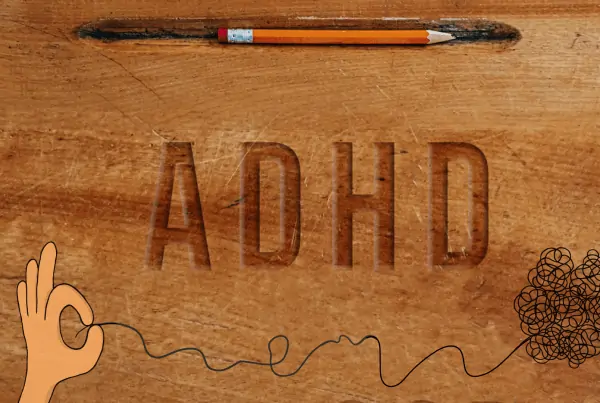We’ve all grown up learning that drugs are bad. Whether bluntly or in detail, there’s a point in any person’s life when they hear about the things drugs can do, and how they affect the brain, the body, and the mind. Yet despite the horror stories, plenty of people still do drugs. Now we dissect how do drugs affect the brain of a teenager.
Adolescents use drugs, ranging from a few drinks to illegal substances like cocaine, and heavily regulated and addictive prescription drugs like fentanyl. Understanding how drugs affect the brain, especially in kids, can help us understand why people continue to use them despite the long-term consequences, both physical and legal.
How Do Drugs Affect the Brain of a Teenager?
We know that age is a risk factor for addiction – in particular, the age when you first start using drugs. The earlier a person has their first illegal drug experience, the higher their likelihood of struggling with addiction later in adulthood. Some of this can be traced back to environmental reasons. If you are around a lot of drug users in the family or the neighborhood as a child, you will have more opportunities to use drugs as you enter your teen years and adulthood. Certain socioeconomic conditions and stressful households are more likely to create addicted teens as well. Other risk factors that play a role include family history, and mental health.
But if you take two people from the same household, and introduce drugs earlier to one than the other, that person has a higher chance of getting addicted in the long-term. Conversely, adults who have their first drug experience in their late 20s and onwards are much less likely to continue using drugs and developing an addiction. A lot of this has to do with the way drug use imprints on the developing brain of a teen or young adult, all the way to the age of 25, give or take a year.
We know that neurology plays a significant role in the way drugs work – and that there are distinct biological differences between individuals. Younger people are more likely to try drugs when exposed to them, and more likely to keep using them following early exposure. Aside from having a greater impact on teens than adults, early drug use can also play a role in negatively affecting the development of the brain. This means affecting teen cognition (thinking), as well as problem solving, information processing, and long-term learning skills.
Teenage Risk-Taking and Drugs
While individual factors cannot be overlooked, generalized risk factors help us better understand what to look out for when treating an addiction, and when recognizing one in the first place. We understand that internal risk factors play a significant role in the development of substance use disorder, and that the factor of age may tie into the immaturity of the teenage brain. The correlation between brain maturity and risk taking ties into how drugs can affect the brain of a teenager.
The portion of the brain that is incomplete in teens is called the prefrontal cortex. The prefrontal cortex is the brain’s decision-making center, which means it is also a crucial element for risk assessment and long-term planning. While incomplete, this doesn’t mean teens are incapable of thinking about the future or making good decisions. It just means that their brain hasn’t matured to its final stage. Teens are inherently less likely to judge risks accurately, and more likely to take them – for no good reason at all. This is why communication with adolescents is vital.
Their reward systems, on the other hand, are fully functional. This means that the addictive effects of drug use can power through the brain at full steam while the parts of the brain responsible for risk assessment and longer-term decision making can’t keep up. Does this mean teens are always in the wrong? Absolutely not. Does it absolve them of the consequences of their actions? Again, no. An immature brain is not a get-out-of-jail-free card, but it is meant to contextualize the increased impact of drug use on teenagers in particular, and why early use conflates so often with long-term drug habits.
Drug Dependence, Tolerance, and Physical Addiction in Teens
The brain is a very complex organ, and we aren’t yet at a point where we can confidently say that we understand every aspect of it, let alone the different ways in which it can potentially malfunction. The mechanism of action behind multiple different psychiatric conditions and even certain drugs is not completely understood. But what we do know helps us make better decisions regarding the treatment and care of people with different neurological conditions, including substance use disorder.
Drug use can temporarily impact and change the way the brain works, desensitizing it to the natural reward system and creating a dangerous feedback loop based on growing drug tolerance, higher dosages, dependence symptoms, and withdrawal symptoms. Addiction can be understood either:
- Mentally or physically, as a battle between the constant craving and urge to drink or use.
- Neurological compulsion triggered by changes in the brain that occur as a result of long-term drug use.
All of this occurs in the adult brain just as it does in the teen brain, but teenagers may be more susceptible to both the short-term effects of drugs, as well as their addictive nature.
Other Health Effects of Drug Use in Teenagers
The brain is far from the only organ affected by teenage drug use. The heart, lungs, liver, kidney, and bones are just a few of the organs and systems of the body that suffer under the recurring use of addictive substances. All of them tend to leave a lasting impact on the body in some way, and because teens are prone to getting addicted faster than their adult counterparts, they may suffer physical symptoms as a result of their drug use at a quicker rate than someone discovering drugs later in life.
If you or someone you know is struggling with uncontrolled drug use, it’s important to get professional help as soon as possible. Substance use disorder can become debilitating and disabling and leave lasting scars. Early detection and treatment can not only save a life, but greatly improve quality of life in the long-term.









